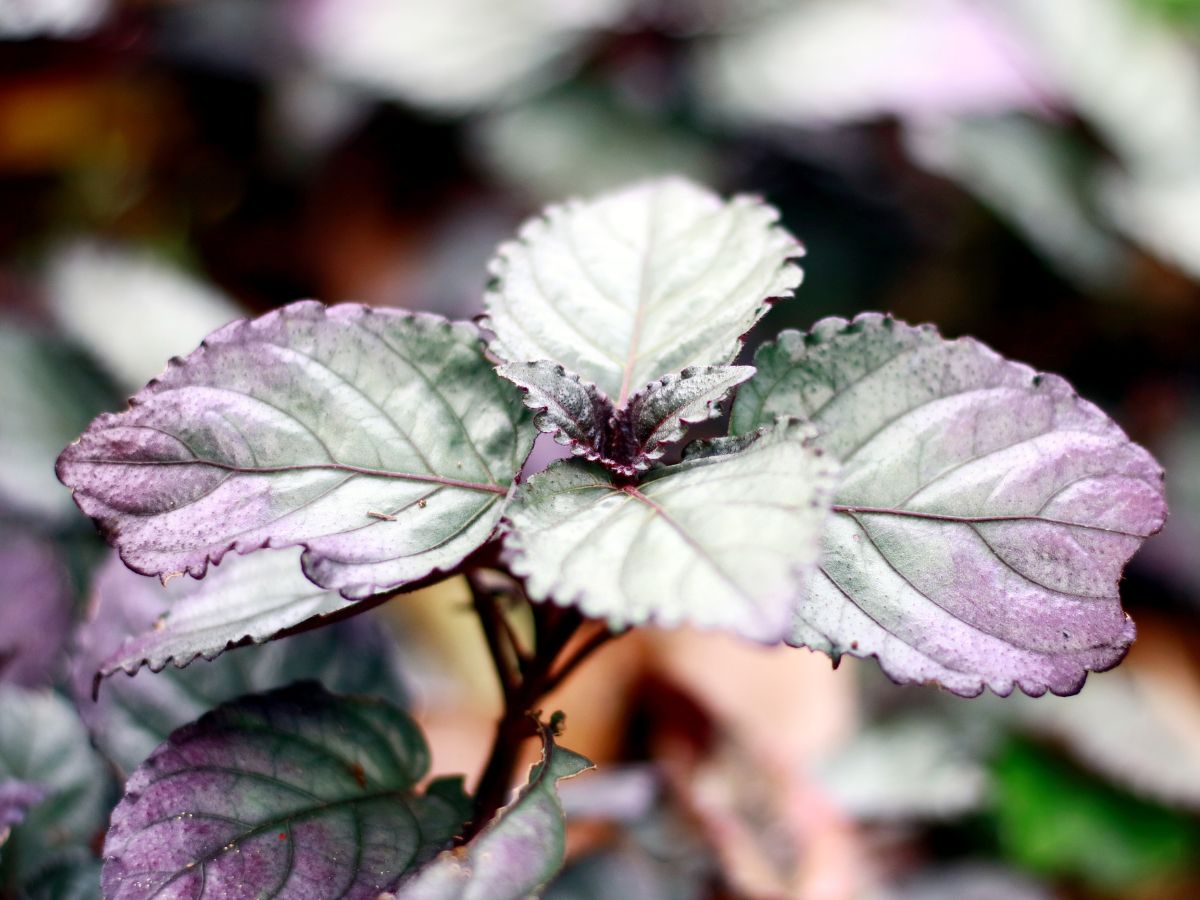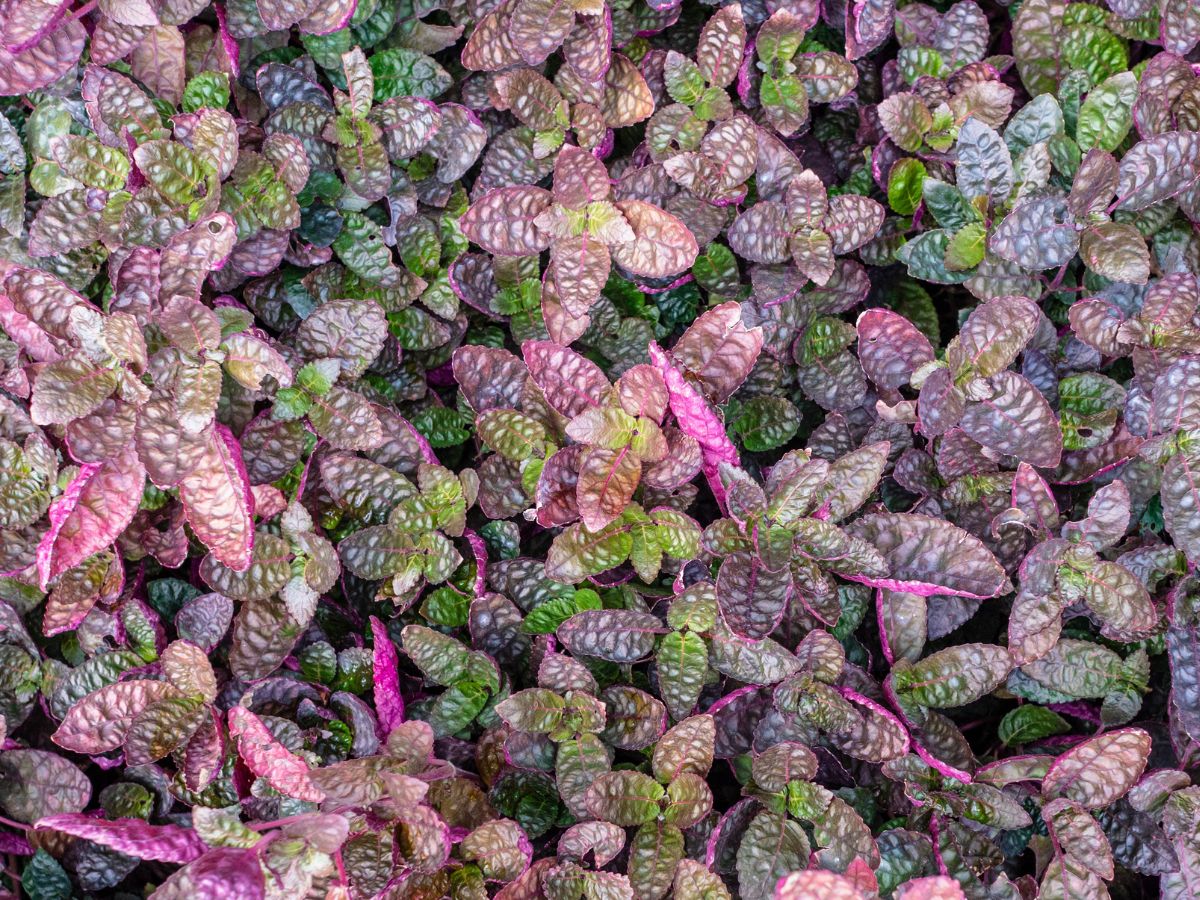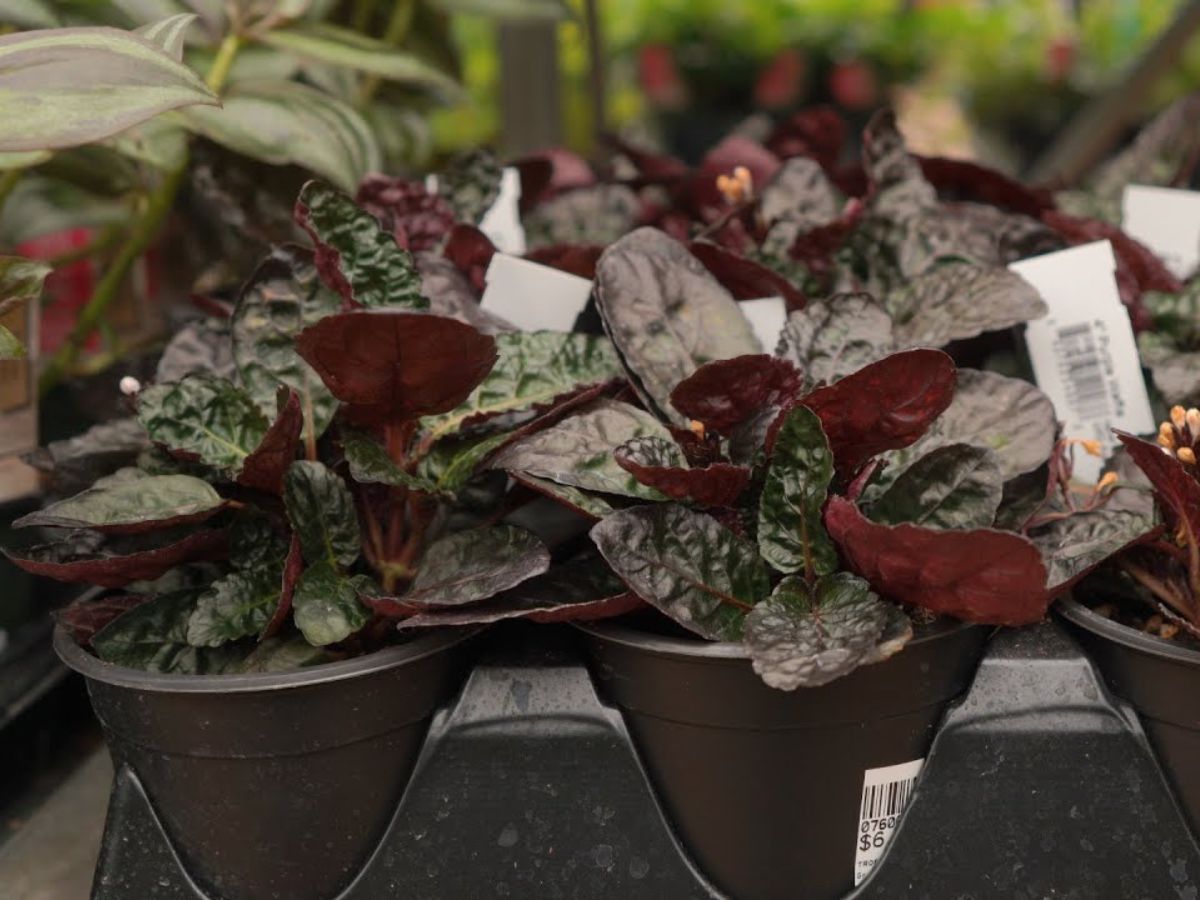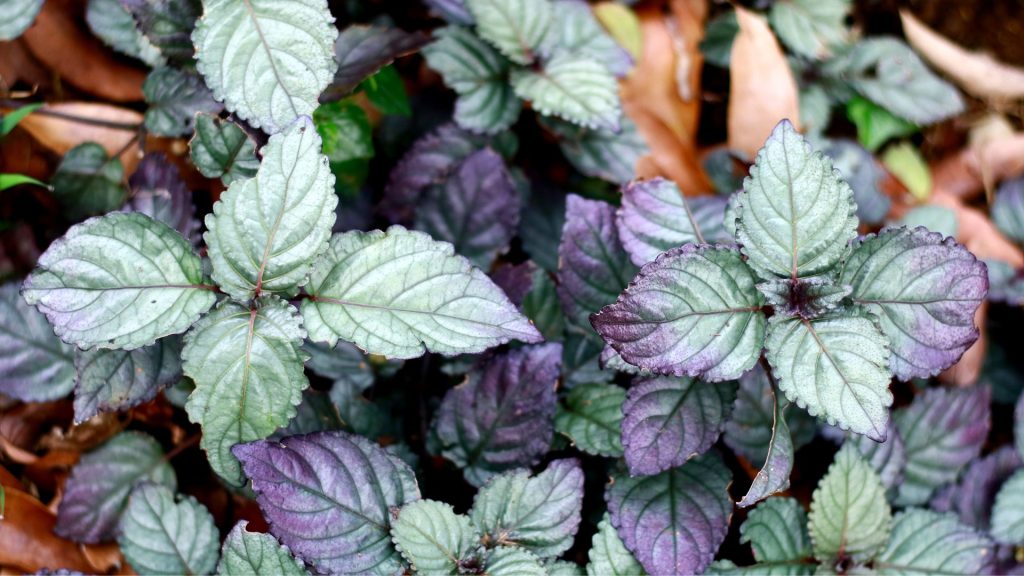Many experienced flower growers prefer to replenish their collections with those plants that to a large extent stand out from the rest. One of these is the purple waffle plant (Hemigraphis alternata). These attractive plants with green leaves on top and purple underneath have an unusual leaf shape. Usually, they are ovoid with jagged edges.
What Is a Purple Waffle?
Hemigraphis is a genus of perennial plants of about 90 species known by colorful names such as ‘Purple ivy’, ‘Purple waffle plant’, and ‘Metal plant’.

Waffle plants are so named because of their shriveled leaves. Colorful Hemigraphis produce rich purple-metallic foliage with a sinuous appearance that resembles a waffle in texture. Easy to grow, low-maintenance purple waffle plant adds a colorful zest to the decoration in any room or office. It is a flowering plant and during the flowering period, you can observe small cute white flowers. True, it blooms indoors quite rarely, even with excellent care.
As for the purple waffle size, a wild plant in natural conditions can grow up to 24 inches. Indoors, the flower would not rise more than 6 inches tall.
Most Popular Varieties
Hemigraphis Colorata ‘Exotica’
This plant is best suited for terrarium environments. Although this species is often used as an aquarium plant, it is not worth leaving it underwater for a long time. It is best to take it out from time to time for recovery.
Belgian Waffle Purple
It is a patented unusual variety of waffle plants with medium-green foliage edged in creamy-yellow. The undersides of the leaves are bright purple. It can grow up to 6 inches tall.

Snow White Purple Waffle Plant
This small plant has light green foliage with white and pink edges. Like the previous one, it can grow up to 6 inches tall.
Purple Waffle Plant Care
Plants with such an exotic appearance are quite suitable for novice gardeners. Two key rules for successfully growing this tropical plant are regular watering and maintaining the right temperature.
Lighting
The purple waffle plant prefers partial shade when growing outdoors, and bright indirect lighting indoors. Direct sun can burn the edges of the leaves, and the cold metallic sheen of the leaves can disappear in direct sunlight. They thrive well under artificial lighting as well.
Temperature
Warmth is a prerequisite for the normal growth and development of the purple waffle plant. In the summer, the plant needs to be provided temperature readings from 73-77 °F, in winter they can be slightly reduced, maintaining at around 60,8 to 68 °F. If the temperature drops below, the plant can even die. Also, strong changes in temperature and drafts should not be allowed.
The Soil
All-purpose potting soil or commercial potting soil is fine for Hemigraphis alternata. If you want to plant purple waffle directly into the ground as an annual, add compost to enrich the soil. The best pH is 6.1 to 6.5 for this plant. You can go down to 5.8, but don’t go above 6.9. Preferred soil rich in humus, filled with a lot of organic material. It should remain moist, but free from excess liquid. A little peat mix would work as well. Avoid hard clay soils as roots can not grow in them.

Watering
For the purple waffle to feel comfortable, it must be provided with optimal moisture. You need to water it every two days. The soil should always be moist. However, overflows should not be allowed, as they can lead to the death of the plant. In winter, when the plant is dormant, it needs to be moistened twice a week. Water for irrigation should be warm and settled.
Humidity
Since purple waffle is a tropical plant, maintaining high humidity is an integral part of Hemigraphis alternata care indoors. Spray the plant regularly, or better yet, use a separate pebble tray to provide moisture to all of your indoor plants. Place a small layer of pebbles in a container with no drainage holes and fill it three-quarters with water.
Set potted plants on top of a pebble or next to a tray. This is especially important in winter, as indoor humidity is usually quite low at this time of year. Using pebble trays is the easiest way to provide your houseplants with a suitable moisture level. The wet bathroom serves as a great spa for sick wafer plants which have been too much time in the heat.
Fertilizer
The purple waffle requires feeding from April to September. For this purpose, liquid fertilizers are used for decorative deciduous plants. Topdressing should be done every three weeks. In winter, the crop is not fertilized.
Pruning
You should prune plants every spring to shorten the shoots by 1/3. Florists also pinch the apical buds on each stem to increase the density of the flower.
Plant Care during Dormancy
During the dormant period, the care of the purple waffle changes somewhat. For it to rest normally over the winter, in the room where it is located, the temperature should be reduced within the range from 60 to 68 °F. Watering should be reduced to two times a week. Also, stop fertilizing the plant. Starting in spring, you can return to your usual flower care.

Purple Waffle Propagation
Typically, growers use one of the following methods to propagate a purple waffle plant.
Propagation by Cuttings
Propagation of the purple waffle plant is carried out by cuttings. For this, the upper part of the plant is cut off and placed in a glass of water. Wait about two weeks for the cuttings to take root. Then they are planted in a container with wet sand for rooting. When the new plant is planted, the pot is covered with plastic wrap, creating a mini greenhouse. This would maintain optimal moisture content and speed up the rooting process. When the plants take root (after about a month), they can be carefully transplanted together with the soil around the roots into a permanent pot, or you can wait until the current pots are too small for them and transplant the plants later.
Propagation by Division
Also, a waffle plant can be propagated by the division method. It is better to do this when transplanting a plant, so as not to disturb it once again. For this, a mature plant is taken and carefully divided into several parts. So that the root system does not rot, the separation points must be sprinkled with wood ash. The separated bushes should be planted in pots in a standard manner and provided with the same care as for mature plants. The only thing that should be paid attention to in this case is maintaining the temperature regime for a month within 75-78 °F.
Flowering
The flowering time of the plant falls in the summer. Inflorescences are formed at the ends of the shoots. They are small and consist of small white or white-pink odorless flowers. They are inconspicuous, so bright leaves play the main decorative role of the plant.
Is the Purple Waffle Plant Poisonous?
Don’t worry, the purple waffle plant is non-toxic to humans, dogs, and cats alike. According to the ASPCA, your animals would be completely safe if they decide to play with it. So don’t be afraid to use this wonderful plant wherever you like. The worst thing that can happen is that your pets can turn the pot over and get hurt, so be careful if you decide to leave the plant within their reach.
Why Is My Purple Waffle Plant Wilting?
Unfortunately, this is familiar to many gardeners. Even with good care, the purple waffle plant can weaken, and its leaves can start drooping. In this case, the parents of these green kids should provide them with extra care so that they grow up healthy and beautiful. Review all of the above waffle plant maintenance requirements and make sure you are doing everything right. Most often, even small deviations from the norm can cause such an unpleasant phenomenon. Purple ivy is an excellent choice both as a houseplant and as a ground cover. True, in the second case, the plant would be able to grow and develop well if you live in zones 10-11. Nevertheless, it is quite easy to care for, and it is completely safe for pets. Moreover, it can clean the air! What could be better? So, if you have been thinking about adding another amazing plant to your collection for a long time, be sure to take a closer look at the waffle plant!


